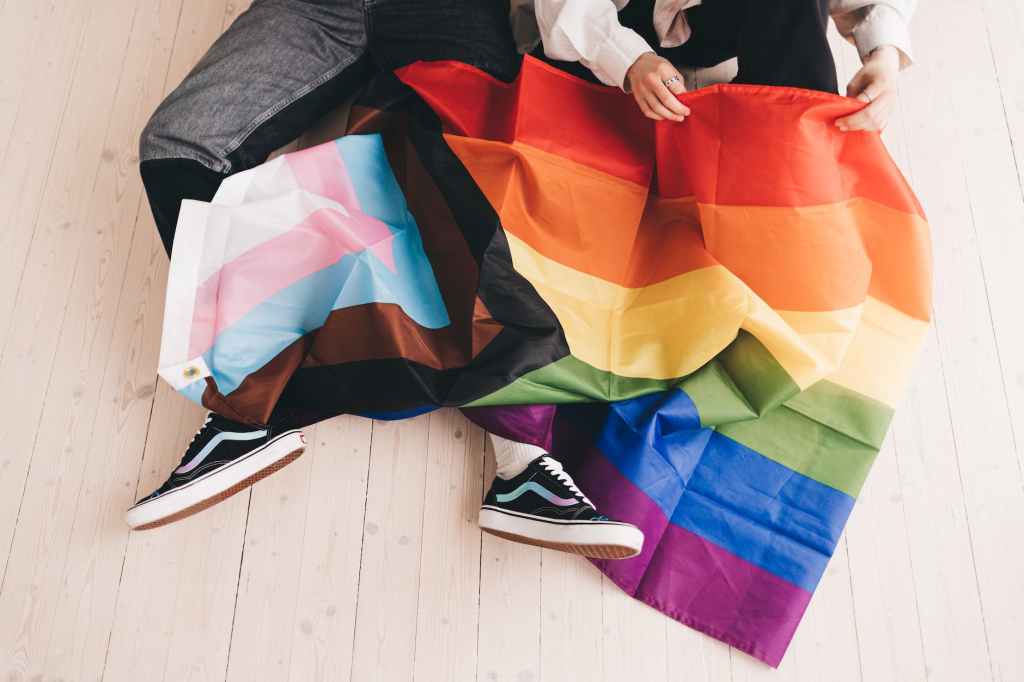Let’s trans up our writing!
Making Transness the Focus
An important part of writing trans characters, major or minor, is the decision on whether to make that part of their identity a focus of their story. I think the most important way to answer that is to figure out the main overarching story first. What is the genre of your story? Do you already have an overarching plot? How abut subplots?
A person’s gender and sexual identity is often secondary to what they’re going through on a day to day basis. Yes, you may meet a lot of queer people who talk about their identities a lot, but that doesn’t mean it’s all we are or all we ant to be seen as. Make sure your trans character is a person who happens to be trans and not just a handful of stereotypes in skintight pleather.
I think ultimately my advice to any cis person trying to write a trans character is this: write a character, then make them be trans. Deciding to make transness the focus of a character’s story is something that you can do, but it requires a lot of research, consultation with trans people and immersion in a trans person’s life as you are going to be writing about a marginalised experience you have never been part of firsthand.
That said — there may come a place in your story where someone being trans will become relevant. For example, in Bitter Truth, Erik is exploring his identity as a nonbinary person for the first time. There are two reasons I came to this conclusion:
- Erik still uses he/him pronouns and his identity isn’t directly addressed in Reckless Truth. There are hints towards it that other queer people will pick up, but I know from experience that if I do not explicitly say this person is trans nonbinary it will forever be a point of debate that I wished to nip in the bud right away.
- Erik is entering into a romantic relationship in Bitter Truth as well as dealing with some of his PTSD and feelings of being an outsider. These are all things that tie into his nonbinary identity without derailing the plot.
Ultimately, how much of a focus someone’s trans identity is to them will be a decision you make based around the story, its genre and focus. Consult with trans writers and readers to figure out what makes sense with the rest of the plot. Talk to trans people in your day to day and learn how their identities affect their lives.
Personal Experience
As a nonbinary person myself I felt confident in pulling from my own experiences to write the trans characters in my work. I’ve been members of local trans support groups and online activism pretty much since I first realised I was trans in the first place and my understanding of the community and our experiences has become rich and widespread.
Admittedly there are still some blindspots I have due to the nature of trans spaces being largely white, especially on a local basis. I would have to research for a lot longer, for example, to write on the experiences on Two-Spirit people or other BIPOC identities.
Still, “write what you know” applies to writing trans individuals. Are you of a marginalised sexuality, for example? Then you have some idea of how society might treat a marginalised gender. Obviously this does not mean you know. Just that you have some idea that you can use as a basis for how you write. Empathy goes a long way in writing.
Who To Represent?
Largely my decisions about which trans identities to represent are based on a ‘gut feeling’. If a character tells me they’re trans, they’re trans — even if they decide to tell me midway through a series in which I thought I’d figured everyone out Ryan I’m looking at you.

Outside of that however, there’s obviously times where I have to deliberately choose my representation. To do that, I generally look towards identities I personally find are underrepresented — specifically identities I have seen or been and wondered why I have never seen a character with that identity when they could be fairly easy to incorporate into a story. This is why Erik retains his he/him pronouns after discovering his gender identity, for example.
There is an idea that this kind of approach is ‘tokenism’ or ‘forced diversity’ but honestly I think it’s more forced to insist every character be cis, white and straight. Anyone who is immersed in queer culture will understand that we tend to flock around one another for safety, and thus a friend group — or cast of characters in this case — with only one queer identity is deeply unrealistic at best and miserable for that character at worst.
All this to say that if you’re staring at your cast of characters and wonder “could one or some of them be queer?” the answer is invariably yes. There are so many of us and so little representation — the love and appreciation the queer community feels towards a well-written character is well worth the time and energy put into research. When I feel that burst of warmth at seeing myself on the screen or the page and I think about the possibility of passing on that warmth to another queer person?
Why would I ever write an allosexual cishet character?
